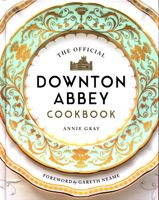Advertisement
Bread at Downton
Appears in
By Annie Gray
Published 2019
Until the 1860s, flour in Britain was stone-ground and then sifted to remove the bran. Depending on the fineness of the mesh, the flour was labeled according to six grades, with “firsts” being the best and “sixths” being mainly bran. The first roller mills began operating in the second half of the nineteenth century and revolutionized the industry. Roller milling made white flour cheaper and more consistent and also removed the germ, which caused flour to go rancid after a few months. At the same time, advances in yeast technology meant that longer-life “German yeast” became available in blocks for the trade, reducing the reliance on brewer’s yeast—or even on sourdough, which was generally disliked both for its flavor and its association with the poor.

